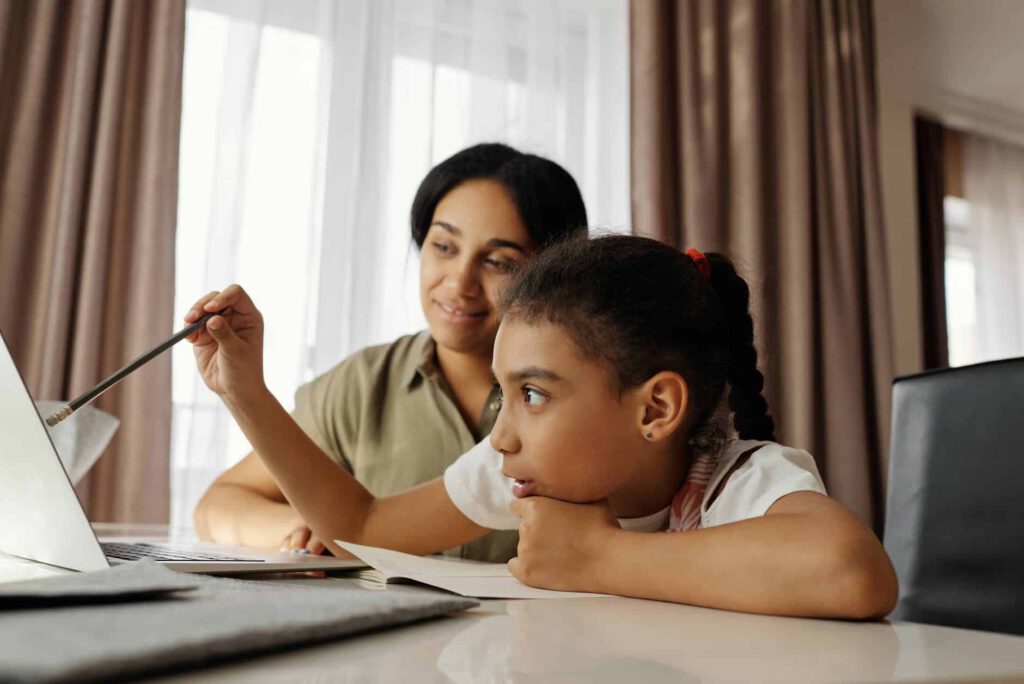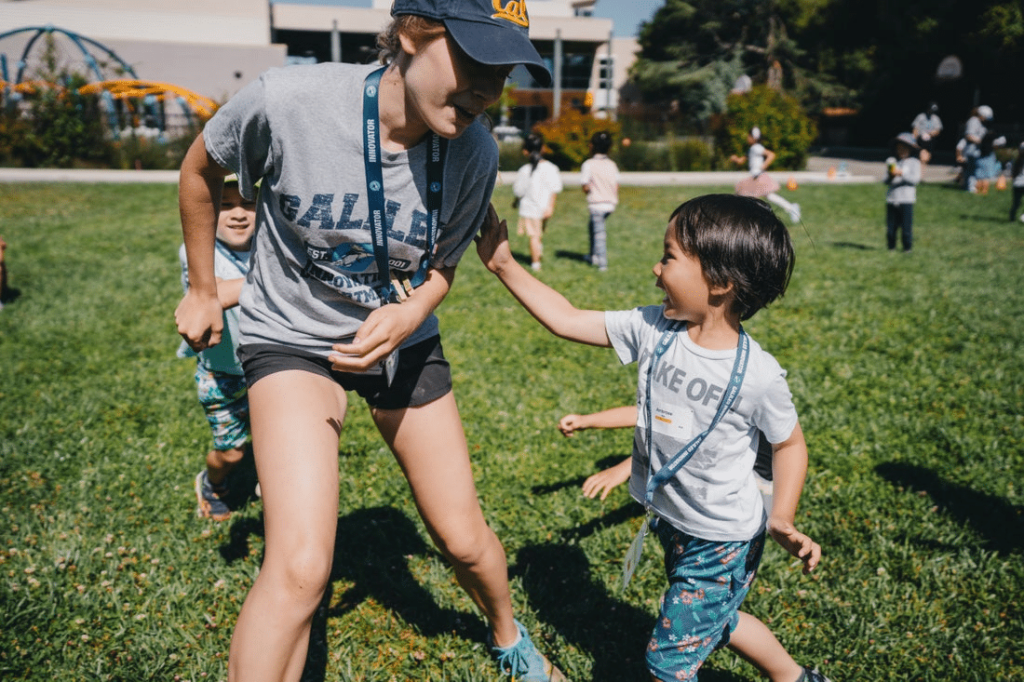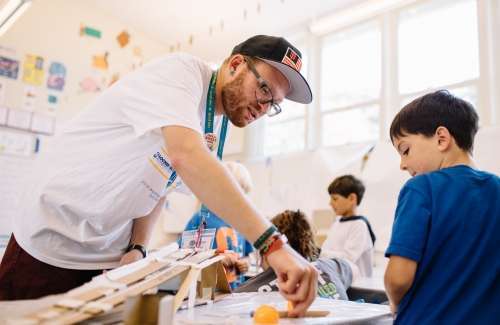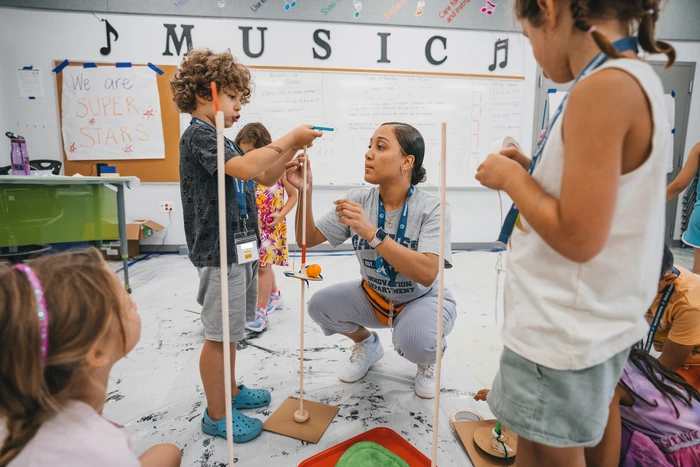There’s no getting around it: this year’s back-to-school season is different. No matter your family’s plan, you’re almost certainly going to be trying new things. That newness may feel especially acute for families who are navigating virtual classrooms or facing their first forays into homeschooling.
These tips from two Galileo camp directors and professional educators may help ease the journey.
#1: Break it up.
“Children’s ability to focus and stay engaged on any one task is really dependent on their age,” reminds Sheighlin, a classroom teacher with a background in child development and behavioral therapy.
“A quick tip for remembering this is however old they are in years is about how much time in minutes they can sit and do a task before needing a break, either for their brain or their body. Your five-year-old can last about five minutes listening to a lesson or working on a task before they need to wiggle, while your eight-year-old can sit for a bit longer.”
Requiring that your kids sit and work for longer than they’re able without a chance to move and get blood flow back to their brain will only result in a battle where no one wins. To combat this, Sheighlin suggests incorporating movement directly into lessons and activities. This could look like:
- Reciting multiplication fact families while doing jumping jacks
- Spelling sight words with their bodies
- Using Legos or blocks to practice spelling their name
- Using whiteboard markers on a mirror to write a story
#2: Share the load.
When kids feel ownership of their studies, they’re better equipped to sit in the driver’s seat while adults in the household act as guides. This not only helps adults preserve their energy—it also supports kids in feeling invested in and excited about their own education.
“Burnout is real, even among professional educators,” says Parisa, an educator with a background in experiential learning, theatre, Montessori and outdoor education. “Invest your energy into setting up systems that work for your family.”
If you’re homeschooling or supporting distance learning, try asking kids questions to guide their learning instead of learning hard on lecturing. “Especially in the beginning, it can be helpful to keep track of the amount of adult speaking time versus student speaking time,” Parisa adds. “Ideally, student speaking time is happening less than adult speaking time.” That means less of a load on you, and more engagement for your kids.
#3: Find a great motivator.
What do you do when your child’s 9:00 AM classroom call comes around and they’re just not having it? Aligning on a reward system can help kids press on when motivation runs low.
“We use a sticker chart in my classroom, which is especially helpful for students who need some extrinsic motivation,” says Sheighlin. The beauty of these systems is that they can easily be adapted for home use.
“Let’s say once your child earns five stickers—one for each school-based activity they complete throughout the day—they can earn something of their choice, like special time with you as their parent or a new movie they want to watch,” continues Sheighlin. “The bigger the motivator, the more stars or smiley faces they need to earn to get there!”
Sticker charts can also serve as a visual reminder of how much your kids have accomplished, helping them get excited about the progress they’re making towards a goal.
#4: Call out the good.
When things are challenging, it can be easy to focus on the negative. While it’s important to take time to reflect on what isn’t working in your design, it’s just as important to notice what’s going well.
“Call out the positive behaviors you notice in your kids,” suggests Parisa. When you do this, you’re both creating positive associations with those activities—which encourages kids to do them again in the future—and creating moments of mindfulness and gratitude to help fill your own cup.
Keep an eye out for school-based goods, like nailing those times tables or approaching a writing prompt with laser focus, as well as those that are in line with your family values, like siblings helping each other out or using kind language. Name those things out loud as you see them.
Ready to level up? Consider getting the whole crew in on the action with a family recognition practice. This can happen at the same time each day, like at the end of the school day or around the dinner table, or in the moment as anyone sees something they’d like to shout out.
#5: Fail forward.
“This is new for everyone,” Parisa reminds. “Be gentle on yourself, and remember that creating a space where you feel supported by your family is just as important as the support you provide for your kids.”
With educators, kids, parents and caregivers all navigating uncharted territory, there are bound to be some extra bumps in the road. It’s not the job of a parent to bat a thousand right out of the gate. As with all things, mistakes will happen. Do your best to model for your kids what it means to embrace challenges and learn from setbacks along the way.
“One of my classroom mantras is that it’s not that you can’t do something—you just can’t do it yet,” agrees Sheighlin. “It’s not that you’ll never find a routine that works for you. Maybe you just haven’t found it yet.”





